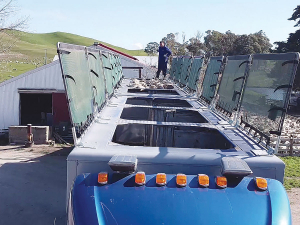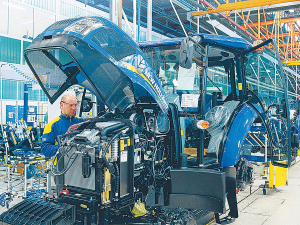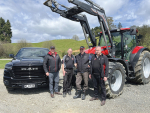Livestock haulers are a crucial link in the New Zealand agriculture supply chain, transporting stock onto or between farms, to livestock markets and processing plants.
Throughout their day, stock truck drivers are exposed to the obvious risks of getting injured by the animals, particularly in yards or races. They are also exposed to risks as they move around the livestock crate on the truck.
In many cases, drivers must traverse a walkway on the top of the crate to move cattle between pens, and at over 4 metres off the ground, they are exposed to substantial risk. Add in wind, rain and a vehicle being rocked by agitated cattle and the danger is clear.
Conventional crate designs are open topped, increasing the risk of animal escapes or animals hitting overhead structures. While there is now a mandatory requirement to use cover nets, they don’t always work and rely on drivers wanting to use them.
Hastings-based Landquip, working with an idea suggested by a stock truck owner and developed by a stock truck driver, manufactures Cratesafe. This is a modular, dual purpose protective screen system that protects drivers from falling over the edge of the crate, while also serving as a cover net for livestock.
Tested and modified over a six-month period, Cratesafe is built locally – using NZ-sourced, quality materials. It also meets handrail and ladder code AS/NZS1170, while the hybrid design – using high strength fiberglass extrusions along with stainless steel – offers strength, flexibility and low weight.
With minimal moving parts, reducing the risk of malfunction, the units are maintenance-free and close in a downward motion making it easier and faster to close on a full stock crate. The operator can engage/ disengage the screens from inside the crate – if it is safe to do so.
The lightweight, composite design means weight is kept to a minimum. Meanwhile, the modular design means the kit is suitable for fitting to any of the standard crate sizes built in NZ. Installing kits will typically take two people around 2.5 hours per crate.
The use of composite materials makes the units non-conductive, so reduces the electrocution risk when maneuvering under electrical cables in yards.
The safety screens are easily visible to the operator from the truck cab or ground level if left open, meaning the vehicle will be over-height – so need to be closed to travel legally and keep stock safe.
www.landquip.co.nz











